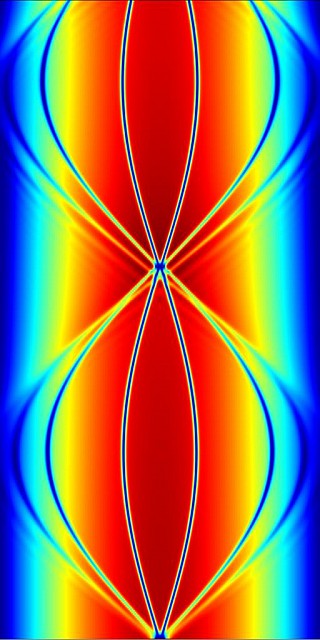Professor Joseph Hope
Position |
Professor |
|---|---|
Department |
Physics Education Centre Fundamental & Theoretical Physics Quantum Science & Technology |
Office phone |
52780 |
Email |
|
Office |
Physics New 2 29 |
Fast quantum gates for arrays of trapped ions
Trapped ions are probably the leading candidate for a viable platform for quantum information processing. This is because they are well isolated from their environment and can be rapidly and flexibly controlled by optical forces. They key figure of merit for a quantum information platform is the number of coherent operations that can be performed per decoherence time. This can be improved by increasing the decoherence time, or by speeding up the coherent operations. The limiting coherent operation is an entangling two-ion "gate". This project will explore a new method of performing quantum gates in arrays of trapped ions where the individual trapping potentials can be controlled dynamically.
Scaling of fast gate operations in 2D and 3D arrays
One of the limitations in performing fast quantum gates on large numbers of ions is that when multiple ions are placed in a trap, the energies of their collective modes become increasingly close together. Ions are typically trapped in a single dimensional lattice. Would 2D or 3D arrays allow larger numbers of ions to be addressed? This project will investigate this possibility.
Feedback cooling of a BEC
Bose-Einstein condensates (BECs) in dilute atomic gases are an exceptional platform for studying the behaviour of quantum fields due to their high isolation from the environment, purity, and their rich but controllable behaviour. Their high coherence makes the also capable of producing new devices for precision measurement. BECs are created by a combination of laser cooling and evaporative cooling. In the evaporative cooling step, most of the atoms are lost. This is unfortunate, as many practical applications require large atom numbers.
Recently, we developed a new method for simulating the full quantum state of BECs, and used it to show that BECs can be cooled using feedback. If they are continuously measured by an off-resonant light beam, the information can be used to modulate the trap potential dynamically to extract energy. Most importantly, this kind of cooling method does not require the atom number to change - opening up the possibility of a thousand-fold increase in atom number in the final BEC.
This project may address many questions: What are the best controls for the BEC feedback? Can tuning the nonlinearity help? How does the efficiency of the cooling scale with temperature? Can the information in the measurement device be used to improve the application of a BEC? What is the optimal way to adjust the measurement rate itself during the cooling process?
Wavefunction engineering
 Phase imprint of a multiple soliton on a BEC
Phase imprint of a multiple soliton on a BECA Bose-Einstein condensate can be regarded as a macroscopic wavefunction. With the application of gradient magnetic fields and carefully chosen pulses of radiation, we have developed a scheme for applying arbitrary phase profiles to that wavefunction, which is the most general linear transformation that can be made without teleporting atoms. This scheme borrows ideas from NMR to use resonance phenomena to write the phase, which allows the scheme to write structures smaller than the optical diffraction limit.
There are many open questions that can be addressed in this project.
- Can this one-dimensional scheme be extended to 2D to coherently couple between different vortex states?
- Can the pulse be optimised further to gain greater control? Would time-dependent gradients help?
- What is the optimal pulse design to apply dynamic lenses to the field?
- (02) 612 XXXXX (within Australia)
- +61 2 612 XXXXX (outside Australia)
Updated: 15 May 2024/ Responsible Officer: Director, RSPE/ Page Contact: Physics Webmaster





